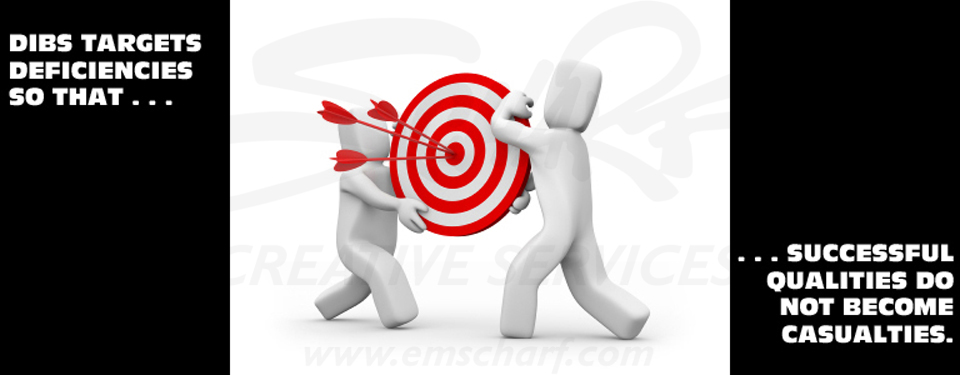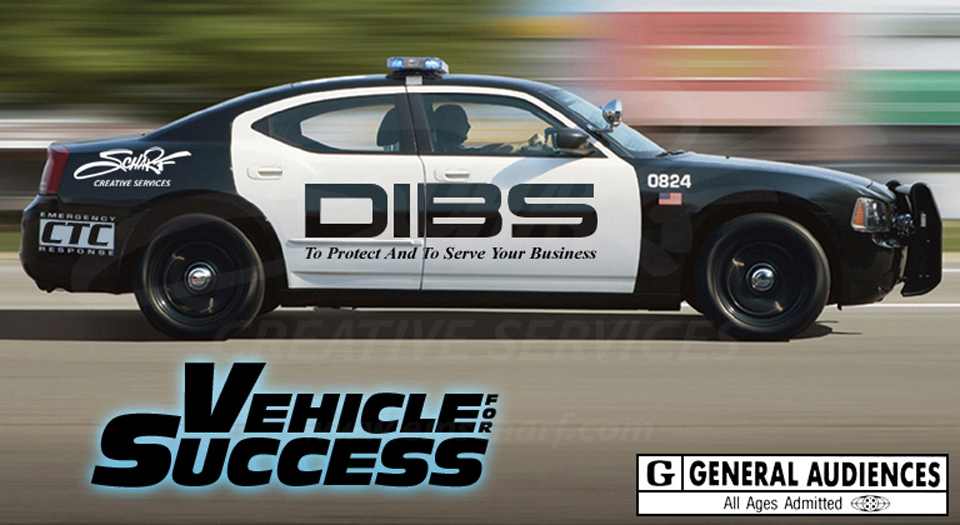-

-
- Who Has DIBS On Your Company?
Part
4
-
- Go To Part
1
2
3
4
5
6
-
- March 16,
2011
- By Eric M. Scharf
-
-
DIBS Targeted
There are thousands of great ideas born or refined everyday and only
a small percentage of the vision holders are equipped to
successfully execute on those ideas.
DIBS targets, supports, and enhances people whose natural skills
already involve vision, leadership, management, and organization.
DIBS targets, supports, and enhances people who are strong in one
particular area but have ambitions to run their own show.
DIBS targets any deficiencies that surround a focused skill set,
converting those limitations into unlimited possibilities.

-
-
- DIBS targets a lack of organization and transforms it into a logical
structure of checks and balances that honors independence,
encourages collaboration, and protects innovation.
DIBS targets a big business CTC in order to refine multi-layered
procedures and carefully guard against waste due to bloated
schedules, funding, and personnel rosters.
DIBS targets a small business CTC in order to build up procedures
that will prevent an independent company from wasting away due to an
unreasonably low estimate in time, personnel, and funds.
DIBS targets a product or an entire product line reasonably or
wildly successful and establishes new ways to further monetize
that success. DIBS can take any software product entertainment,
creative, or office productivity suite and build an ESL plan in support of add-on / plug-in components which can
be sold through a product site online or through a retail end-cap
display.
DIBS targets underperformance, identifies missing or misappropriated
ingredients, and remixes the resource recipe to perform as intended.
DIBS targets over-performance, confirms whether or not resources are
being overcooked, and if not, DIBS attempts to bottle that
over-performance and sell it on the open market.
DIBS Practiced
Practice makes perfect, and DIBS like any other approach to
business management must be practiced, maintained, and grown in
support of the practice, maintenance, and growth of your business.
Businesses even in a good economy are always looking for profit,
sustained profit, and sustained profitable growth. Everyone is
always looking to trade in their vehicle (for success) for the
latest model.

-
-
- Upgrading your vehicle for success is never as simple as it seems
and accomplishing such a task with DIBS on your side requires
familiarity with all of your moving parts in order to refine those
parts down into their base automotive categories.
The vehicle for success is broken up into five equal parts:
1 The Engine: The great idea and the championing entity
(individual
or partnership).
-
- 2 The Chassis: The CTC plan
A-Z proof that you are actually serious about your business, your
product concept(s), and the PRPs with which you may have to partner.
-
- 3 The Transmission: The personnel. While
a manual transmission allows more independence for when your
business or product must change gears, an automatic transmission with
steering wheel mounted manual paddle shifters will prove more
flexible allowing you to automate
everything but the most innovative business and product components.
-
- 4 The Fuel: The funding source(s). Money is money, but you want to procure it from the most flexible
background (and I am not referring to cash, check, or charge). You may have to give up a piece of your business (to a not so silent
partner) in order to fund your business. You may only receive
funds on a per-milestone basis rather than ideally up front for the
entire product cycle. Finding your funds can be far more
complex than choosing between regular unleaded and "clean" diesel.
-
- 5 The Trim Level: The results light weight, strong, and built to
outshine and outlast the competition.
Everyone ideally wants to achieve maximum success with the highest
trim level in everything they do.
Everyone realistically and reasonably hopes to achieve proof of
success upon which sustained profit and profitable growth can be
pursued.
Everyone pulls up to the starting line with unique vehicles by a
hair or a headful with a variety of differences.
DIBS allows you to reduce those differences down to an issue of
scale and scope: the scale of your vehicle determines the scope of
your success.
The number of moving parts you directly address in your CTC plan,
the larger and more capable your vehicle for success. You never know
when your vehicle for success will need to switch from two-wheel
drive to four-wheel drive, but it is
really convenient to be able to choose between a high-revving street
race and a low-gear off-road adventure . . . with the very same set
of wheels.
Go To Part
1
2
3
4
5
6
|